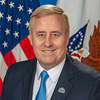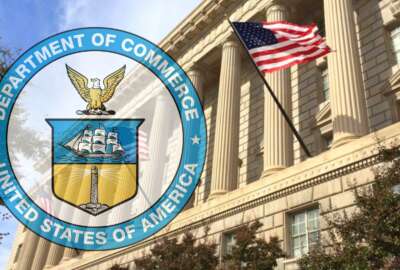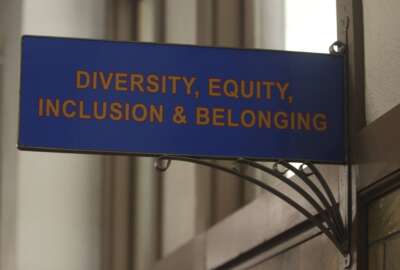Jim Gfrerer, the assistant secretary for information and technology and chief information officer at the Veterans Affairs Department, said the sense of urgency, extra funding and the support of non-IT executives helped the agency meet the needs of remote workers and veterans over the last five months.
The work that would have normally probably taken anywhere from two to three years, to really figure out and to provision all the upgrades and get them in place. We've essentially and largely got those done in about three-to-four months.
James Gfrerer
Assistant Secretary, Information and Technology & Chief Information Officer, Department of Veterans Affairs
Lessons Learned on Acquisition and Implementation
Pre-COVID, we had an unfunded requirement around some upgrades for our two gateways. In our council meetings with our partners, it was voted as a low priority. Well, guess what? COVID hit, and that changes the day entirely.
James Gfrerer
Assistant Secretary, Information and Technology & Chief Information Officer, Department of Veterans Affairs
Post-Pandemic Digital Strategy and Customer Services
In terms of the cloud, largely, our digital strategy remains intact. You talk about software, one of the challenges for the VA, and any federal agency, is around development. We've got about 800 systems in our environment and applications so we're constantly looking for how do we get those into a more refined ecosystem? What can we decommission? I think one of our pushes is how do we build the common platforms and really create a low code, no code environment, so that when we look at development and enhancements that have to occur, be they in the pandemic or outside of a non-emergency situation?
James Gfrerer
Assistant Secretary, Information and Technology & Chief Information Officer, Department of Veterans Affairs
For the Veterans Affairs Department, the coronavirus pandemic was a perfect storm for IT modernization.
With the emergency, came a sense of urgency, an influx of unexpected funding and, maybe most importantly, the realization from non-technology executives of the importance of IT to make the mission successful.
“We refer to it, I think, Dr. [Richard] Stone, [executive in charge of the Veterans Health Administration] characterize this, like many in the country, as a black swan event. It was that once in 100-year event that really none of us, the sum total of our experiences and knowledge, was really going to help us navigate our way through it,” said Jim Gfrerer, the assistant secretary for information and technology and chief information officer at the Veterans Affairs Department, on Ask the CIO. “It largely confirmed our strategy and what was in flight around our migration to the cloud, around our data management strategy, around cybersecurity and around decommissioning legacy systems. We really looked at as an opportunity to accelerate that journey, certainly around the telework.”
Congress allocated VA more than $2.1 billion in additional IT funding in the stimulus laws to help them adjust to both telework and telehealth.
The money came at the perfect time as well—and it may be a good case study into why Congress should consider this approach for other agencies as well—because VA had several “unfunded IT mandates” that it needed to address to make remote working successful.
Gfrerer said upgrading network capacity and addressing the challenges with the Trusted Internet Connections (TIC) requirements were among the areas the pandemic brought a sense of urgency too that maybe wasn’t there before.
“The work that would have normally probably taken anywhere from two-to-three years, to really figure out and to provision all the upgrades and get them in place. We’ve essentially and largely got those done in about three-to-four months,” he said. “With necessity being the mother of invention here, it’s nothing like a good crisis to focus the mind.”
VA, generally speaking, has been mostly an on-premise environment and telework and telehealth weren’t necessarily used beyond weather events or special cases.
But the pandemic required VA to stress test their network, including their four TIC gateways, to make sure it could handle the expected surge in use by employees and veterans.
“We were able to figure that out, get with our vendors, modernize and upgrade our bandwidth to our two gateways, similar work along telehealth and around our delivery. Essentially, we tripled our remote access employees from anywhere about 40,000 up to about 140,000,” he said. “We’ve taken our telehealth sessions from a low of, I believe, pre-COVID about 2,000. The other day we eclipsed 30,000 sessions of telehealth. So you can see that these are significant increases. Again, it took it all hands on deck approach. A lot of weekends, working out through May, and then certainly accelerating that journey to make sure that we’re delivering for the 9 million patients and VHA and the 20 million nationwide veterans that are eligible for our services.”
With the urgency and funding in place, now came the realization by non-IT people about the importance of the technology.
Gfrerer said the mission area quickly realized how critical the TIC gateways were to getting work done.
“Pre-COVID, we had an unfunded requirement around some upgrades for our two gateways. In our council meetings with our partners, it was voted as a low priority. Well, guess what? COVID hit, and that changes the day entirely,” he said. “I can tell you that our business partner, and we’ve had this kind of candid conversation after the fact, they now realize that you can have the best application and services out there, but if you can’t get in either VPN or access gateway into the network, then it doesn’t matter a hill of beans. We worked with Cisco, for example, at the data centers to upgrade the VPNs, and with the carriers like AT&T and CenturyLink to double the bandwidth. Without those real things and real money, we would not have achieved those our success.”
Gfrerer, who joined VA about 18 months ago, said he has been focused on driving business outcomes through technology, and the pandemic reinforced those goals.
The investments VA made around cloud computing and application modernization over the last few years helped make the move to remove work easier.
He said the use of telehealth is a good example. The on-premise technology saw about 2,000 sessions a day. VHA moved the telehealth platform into a commercial cloud and now can support 20,000 sessions a day.
“We’ve talked pretty openly about our plan for our 800 existing applications and systems and putting about 350 applications in the cloud by 2024. We’re reevaluating that number,” Gfrerer said. “Ultimately, we are trying to drive to a much more of an operating expenses business model to really flatten that investment plan, and to avoid those spikes in technology refresh and modernization. We’re continuing to reevaluate, not just across the VHA portfolio, but all the rest of the enterprise VBA and NCA.”
Gfrerer said the fact that having certain applications in the cloud let them scale up and down, and have the necessary flexibility to meet current and future needs.
“In terms of the cloud, largely, our digital strategy remains intact. You talk about software, one of the challenges for the VA, and any federal agency, is around development. We’ve got about 800 systems in our environment and applications. So we’re constantly looking for how do we get those into a more refined ecosystem? What can we decommission? I think one of our pushes is how do we build the common platforms and really create a low code, no code environment, so that when we look at development and enhancements that have to occur, be they in the pandemic or outside of a non-emergency situation? How can we respond a lot faster because a lot of a lot of the VA legacy systems, like a lot of federal legacy systems, are not written on those common platforms? They’re not written in a low code, no code environment. Certainly we’re going to be we’re going to be looking to accelerate around that,” he said. “We’ll always have a balance, I think across the enterprise in terms on-premise versus off-premise. I think our responsibility as we look to that cost efficiency, is to make sure that we are also identifying the true costs. And sometimes those get masked when we don’t have that true operational expense mentality.”
VA already is well down the path of using Technology Business Management (TBM) framework and standards to measure cost of IT. Gfrerer said TBM will let VA get a more accurate picture of its day-to-day costs and move away from that operating expense model to pay for technology upgrades.
Over the last few months, Gfrerer said a few things became clear to VA.
“We realized that our digital strategy is sound. Now we just need to accelerate on all aspects of it. We’re probably going to be accelerating around cloud to provide that scalability, that flexibility, certainly around telehealth,” he said. “I don’t think any of us would have predicted there was a time about the middle of April where there were more daily telehealth visits than they were on-premise, none of us probably would have predicted that except for once in a century pandemic. When it comes to telework and our business model, the theme is very similar to what you hear across commercial sector and certainly around the rest of the federal government that it’s a new day, we’re not going back.”
Copyright
© 2025 Federal News Network. All rights reserved. This website is not intended for users located within the European Economic Area.








